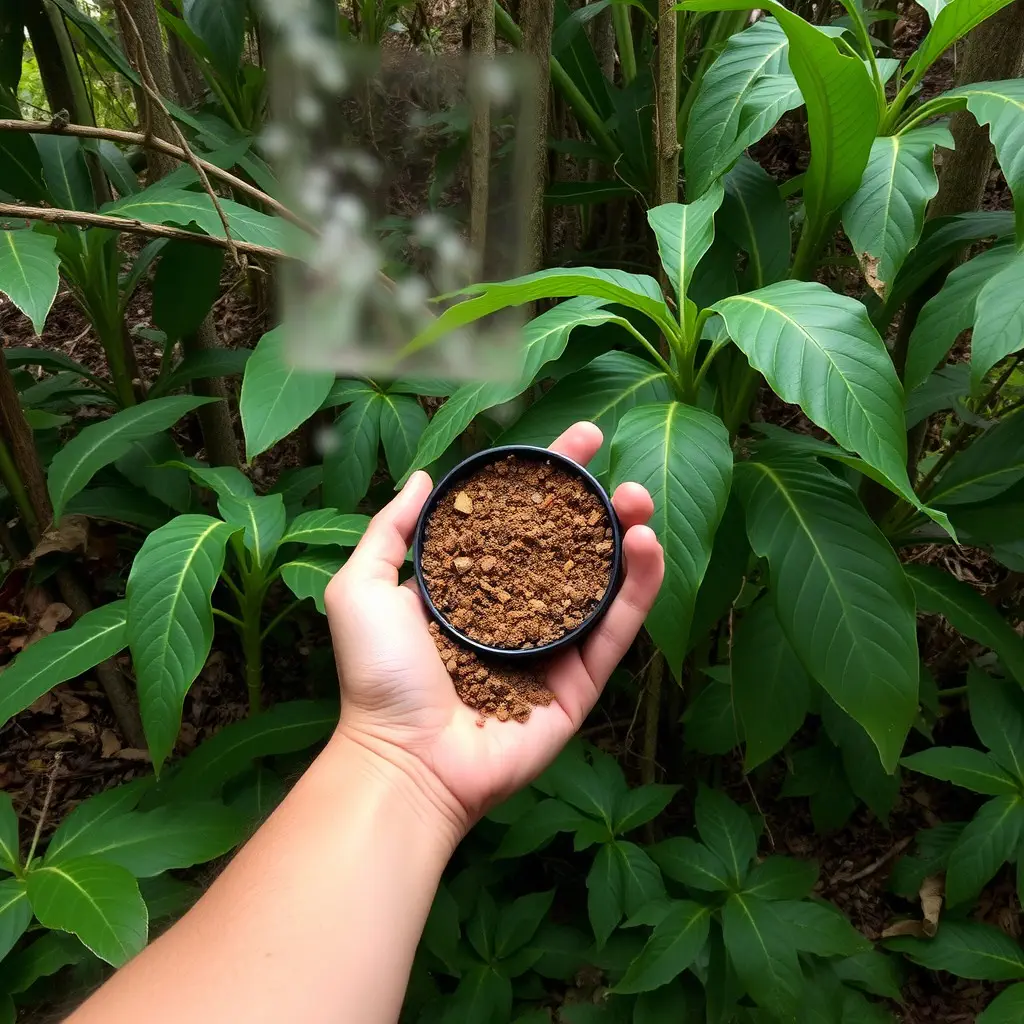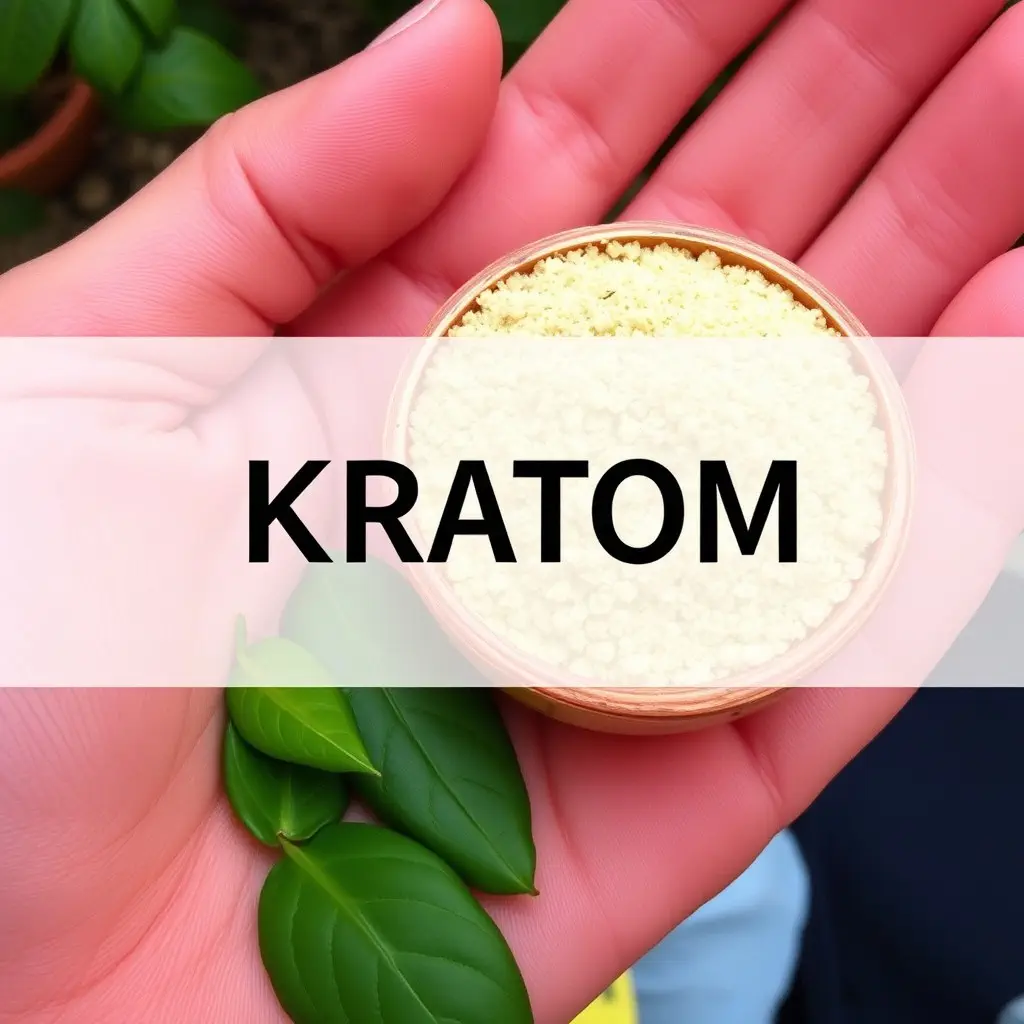Kratom, a Southeast Asian plant, has been studied for its anti-inflammatory effects, which may offer relief from joint pain associated with conditions like osteoarthritis and rheumatoid arthritis. The presence of alkaloids such as mitragynine and 7-hydroxymitragynine is believed to inhibit pro-inflammatory cytokines, potentially making it a natural alternative for pain management. Preclinical research indicates that these compounds can modulate inflammation by affecting key pathways and receptors involved in the body's immune response and pain perception. However, due to limited comprehensive clinical studies on its long-term effects, users should approach kratom with caution, considering its potential for side effects and drug interactions. The anti-inflammatory properties of kratom are promising enough to warrant further scientific investigation as a natural treatment option. For those exploring holistic approaches to joint pain management, kratom can be used as a complementary treatment alongside traditional medical therapies, but it's crucial to consult healthcare providers and monitor for adverse effects due to its varying legality and individual health differences.
explore the potential of kratom as a natural remedy for joint pain relief, delving into its anti-inflammatory effects and integrating it into holistic pain management strategies. This article sheds light on how kratom may alleviate joint discomfort by mitigating inflammation, offering insights into its scientific basis and practical applications. As we navigate the complexities of joint health, understanding the role of kratom becomes increasingly pertinent for those seeking alternative relief options.
- Unraveling the Anti-inflammatory Effects of Kratom on Joint Pain Relief
- Exploring the Science Behind Kratom's Role in Mitigating Inflammation and Joint Discomfort
- Integrating Kratom into a Holistic Approach for Joint Pain Alleviation: Considerations and Precautions
Unraveling the Anti-inflammatory Effects of Kratom on Joint Pain Relief

Kratom, a tropical deciduous tree native to Southeast Asia, has garnered attention for its potential anti-inflammatory effects, particularly in the context of joint pain relief. Studies have indicated that kratom contains alkaloids such as mitragynine and 7-hydroxymitragynine, which may contribute to its anti-inflammatory properties. These compounds are believed to modulate inflammatory pathways in the body, offering a natural approach to joint pain management. The mechanism by which kratom exerts its anti-inflammatory effects is complex and multifaceted, potentially involving the inhibition of pro-inflammatory cytokines and enzymes that are pivotal in the inflammatory response. This could be particularly beneficial for individuals suffering from conditions like osteoarthritis or rheumatoid arthritis, where chronic inflammation is a hallmark.
Furthermore, anecdotal evidence and preliminary research suggest that kratom may also act as an analgesic, further enhancing its potential for joint pain relief. The anti-inflammatory effects of kratom are not without controversy and caution is advised due to the lack of long-term clinical studies and the potential for side effects and interactions with other medications. Nevertheless, the possibility that kratom could offer a novel avenue for natural joint pain relief merits further investigation, particularly as alternative treatments for inflammatory conditions continue to be sought after.
Exploring the Science Behind Kratom's Role in Mitigating Inflammation and Joint Discomfort

Kratom, a tropical tree native to Southeast Asia, has garnered attention for its potential anti-inflammatory effects, which may offer relief from joint pain and discomfort. Scientific research suggests that kratom contains alkaloids, such as mitragynine and 7-hydroxymitragynine, which exhibit complex pharmacological actions. These alkaloids are believed to modulate the body’s inflammatory response by interacting with various receptors and pathways involved in pain perception and immune system activation. Preclinical studies have indicated that kratom can inhibit key pro-inflammatory cytokines, such as TNF-alpha and NF-kappa B, which are pivotal in the initiation and propagation of inflammation. This action is particularly significant as it targets the underlying mechanism of joint pain often associated with conditions like osteoarthritis and rheumatoid arthritis. While human clinical trials are necessary to fully understand its efficacy and safety profile, the anti-inflammatory effects of kratom provide a compelling scientific basis for considering it as a natural alternative or adjunct therapy for those suffering from chronic joint discomfort. As research continues to evolve, the potential role of kratom in mitigating inflammation and offering joint pain relief is an area of interest that warrants further investigation.
Integrating Kratom into a Holistic Approach for Joint Pain Alleviation: Considerations and Precautions

Kratom, a plant originating from Southeast Asia, has been explored for its potential anti-inflammatory effects, which may contribute to joint pain relief. When integrating kratom into a holistic approach for joint pain alleviation, it’s crucial to consider the various strains and their respective alkaloids, mitragynine and 7-hydroxymitragynine, which are believed to exhibit these anti-inflammatory properties. Holistic practices often encompass a combination of natural remedies, physical therapies, and lifestyle modifications aimed at reducing pain and improving overall well-being. In this context, kratom may be used as a complementary measure alongside conventional treatments like medication and physiotherapy. Users should approach the use of kratom with caution, adhering to recommended dosages and being aware of potential interactions with other medications. It’s also important to note that the efficacy and safety profile of kratom can vary based on individual health conditions, and its use is subject to legal restrictions in certain regions. Therefore, before incorporating kratom into a joint pain management plan, consulting with healthcare professionals is advised to ensure safe and effective integration into one’s overall treatment regimen. Additionally, monitoring for side effects and adjusting the approach as needed are key considerations for those seeking to harness the anti-inflammatory effects of kratom within a holistic framework for joint pain relief.
In conclusion, the anti-inflammatory effects of kratom have been comprehensively explored in relation to joint pain relief. The scientific evidence suggests that kratom may offer significant benefits for individuals experiencing inflammation and discomfort associated with joint issues. Integrating kratom into a holistic treatment plan can be an effective approach when combined with other conservative therapies, provided that appropriate considerations and precautions are taken to ensure safety and efficacy. Future research is necessary to further elucidate the mechanisms by which kratom acts to mitigate joint pain, as well as to clarify optimal dosing and long-term effects. As a natural compound with potential anti-inflammatory properties, kratom represents an intriguing avenue for joint pain management, complementing current therapeutic strategies.






